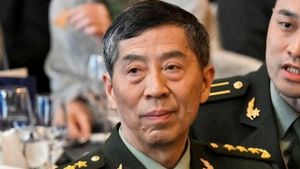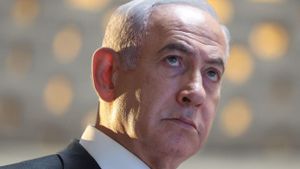On November 12, 2024, China showcased its newest addition to its military aviation fleet—the J-35A stealth fighter jet—during the China International Aviation and Aerospace Show. This modern, medium-sized, multi-purpose fighter jet is being billed as part of China's strategic moves to bolster its combat capabilities, especially keeping the capabilities of regional adversaries like India and the United States firmly within its scope.
The J-35A is notable not just for its stealthy design but also because it is being produced with two variants: one for the Air Force and another specially crafted for aircraft carriers. With the J-35A, China continues its efforts to complement its existing J-20 stealth fighter, which has already entered service.
Experts have begun to weigh in on the potential similarities between the J-35A and some more established fighter jets, particularly the American F-35. Several reports suggest the J-35A bears certain resemblances to its American counterpart, especially considering it is equipped with double engines and has variants capable of short take-off and vertical landing.
Fu Qianshao, a Chinese aviation expert, mentioned to Global Times the significance of this fighter jet's reveal. He stated, "After America's F-22 and F-35 fighter jets, China is the second country to develop advanced stealth jets with the J-20 and J-35A still visible on the global military stage." This, he notes, is part of China's broader military modernization strategy.
While the J-35A's aesthetics often draw parallels to the F-35, its performance capabilities and strategic purpose may be what sets it apart. According to some assessments, China's military ambitions extend beyond the design imitators; rather, they are focused on integrating advanced technology to produce highly capable aircraft. The J-35A presents itself as not just another jet but as part of China's endeavor to secure its strategic interests and assert itself among global military powers.
China has been actively working on improving its aerial capabilities as part of its larger strategic response to military developments in other nations, particularly the U.S. military's presence and commitments to allies around the world. This continuous modernization reflects China's ambition to establish itself firmly within the echelons of leading military powers.
Officials within the Chinese government express this sentiment overtly, with media attitudes reflecting the excitement surrounding the J-35A's capabilities. Events like these are likely to influence how China interacts with neighboring countries and its stance on global military engagements.
Simultaneously, China's military maneuvers, including air and naval exercises near Taiwan, and its narrative targeting regional adversaries raise questions about the geopolitical ramifications of the J-35A’s introduction. How will nations like India and Japan respond to China's growing air power?
Reflecting on the backdrop of increasing aerial tensions, experts believe the J-35A could play a pivotal role. Aircraft mobility and the ability to dominate airspace become increasingly important as nations upgrade their military capabilities. For nations already engaged in territorial disputes or rivalry, the development of the J-35A could be viewed as both alarming and challenging.
The Chinese aviation sector, by rolling out such advanced fighter jets, aims not only to modernize its forces but to project power and deterrence across the Asia-Pacific region. The timing of the J-35A’s reveal is intentional, as it plays directly to the narrative of strength China wants to promote to its allies and rivals alike.
The J-35A is set to reshape more than just China's air combat abilities; it's poised to impact air defense strategies of neighboring countries significantly. With its debut, there could be newfound urgency among regional powers to assess their own air combat infrastructures, also leading to intensified arms races.
How the J-35A fits within the broader framework of global military aviation and how effectively it can counter other advanced fighters remain to be explored. Observers highlight the importance of tracking the aircraft’s developmental milestones, operational deployment, and regional military dynamics as these stories evolve.
The stakes are high. With the J-35A stealing headlines at the China International Aviation and Aerospace Show, the world now watches closely. What will this mean for geopolitical stability? Will it usher in a new arms race? Only time will tell as nations respond to these advancements on all sides.
It’s apparent the J-35A’s presence serves as both a symbol of national pride for China and as evidence of its pivotal role on the global military stage, raising questions about its long-term impacts on international relations moving forward.
The battle for air supremacy is heating up, and one thing’s for certain—the J-35A is just getting started.



